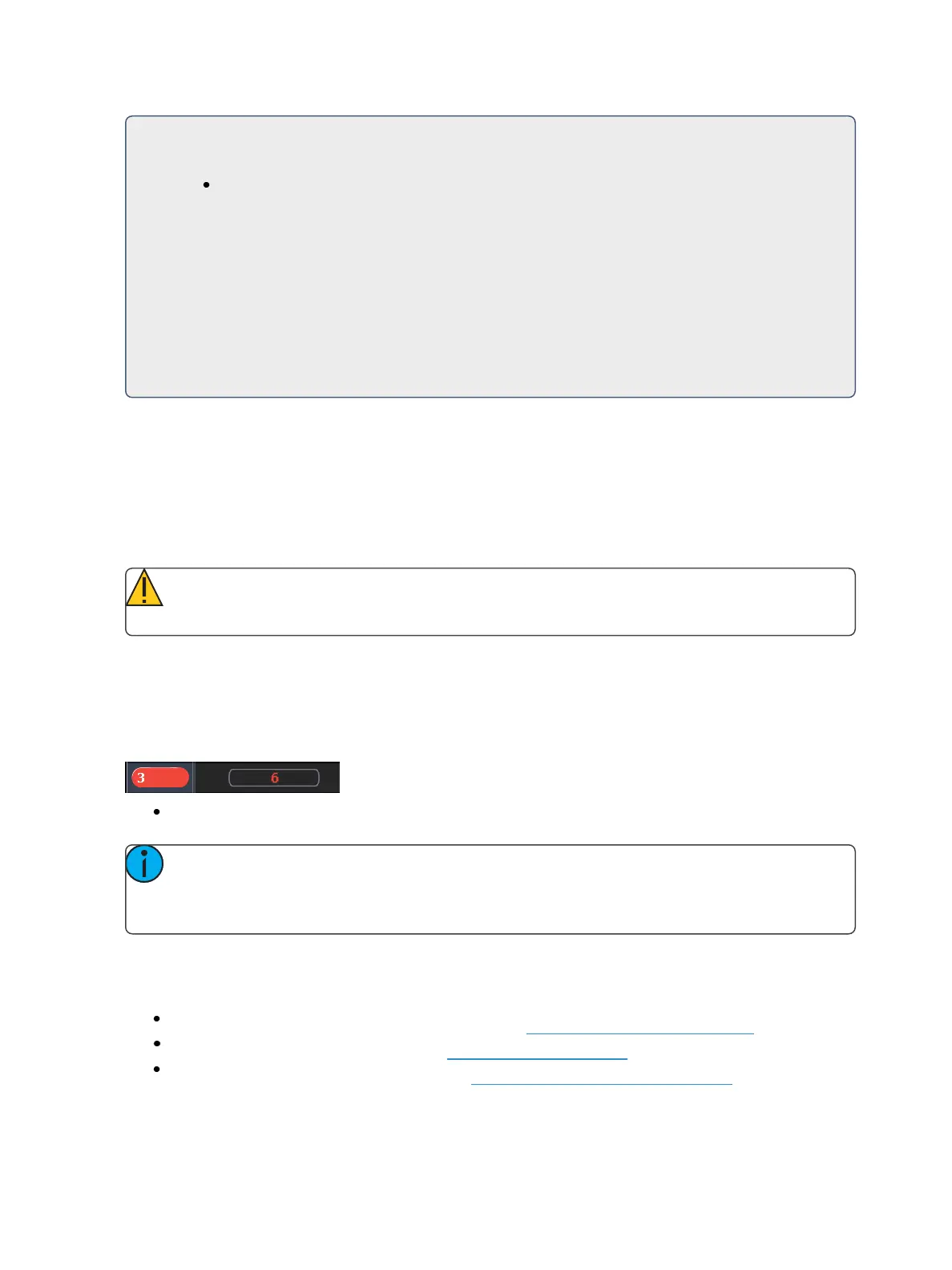312 Eos Family Operations Manual
Assume you have cue list 1 already loaded to the master playback faders. Now you want to
load cue 2/1 to a fader.
[Cue] [2] [/] [1][Load]
If you press the [Load] button above the master playback fader, it will load cue 2/1 into the
pending file. You could also press the [Load] button above any other playback fader to load
the cue into that fader’s pending file.
In this example, the last cue executed from cue list 1 is still the active cue, while cue 2/1 is
pending. When [Go] is pressed, 2/1 will be executed.
You can also load cue list 2 by pressing [Cue] [2] [/] [Load]. This will load the first cue of list 2
into pending.
The selected cue is changed by go, record, or update instructions as well as cue modification and
selecting a cue on the command line. When you execute a cue that has a follow or hang time, the
next cue will become the selected cue when activated.
In Blind
While in Blind, changing the selected cue will change the playback status display to show inform-
ation surrounding that cue.
CAUTION: When editing in blind, changes to cues are automatically stored, therefore no
update or record command is required.
While working in blind mode, cues can be executed in live using [Go], [Back], and [Go to Cue], but
this does not change the cue you are working with in blind.
Loading a Cue With Temporary Time
A cue can be loaded with a temporary time.
[Cue] [3] [Time] [6] [Load] - loads cue 3 with the manual time of 6.
Note: For multipart cues, the temporary time will be applied to the entire cue, not just the
part on the command line. For cues with discrete timing, its parameters will use the tem-
porary time instead of the assigned discrete timing.
Out-of-Sequence Cues
An out-of-sequence cue is any cue that is played back in one of the following ways:
Cue is executed using a [Go To Cue] command. (Go To Cue(on the facing page))
Cue is executed by a link instruction. (Link/Loop (on page261))
Cue is loaded into a fader’s pending file. (Selected Cue(on the previous page))

